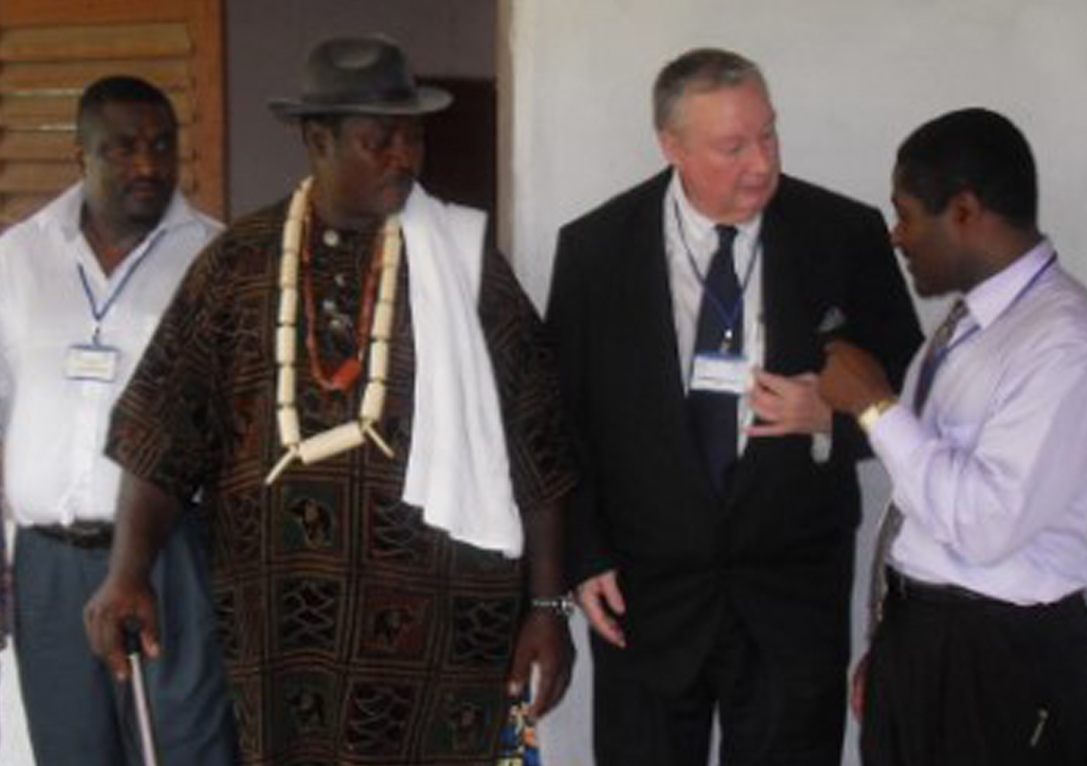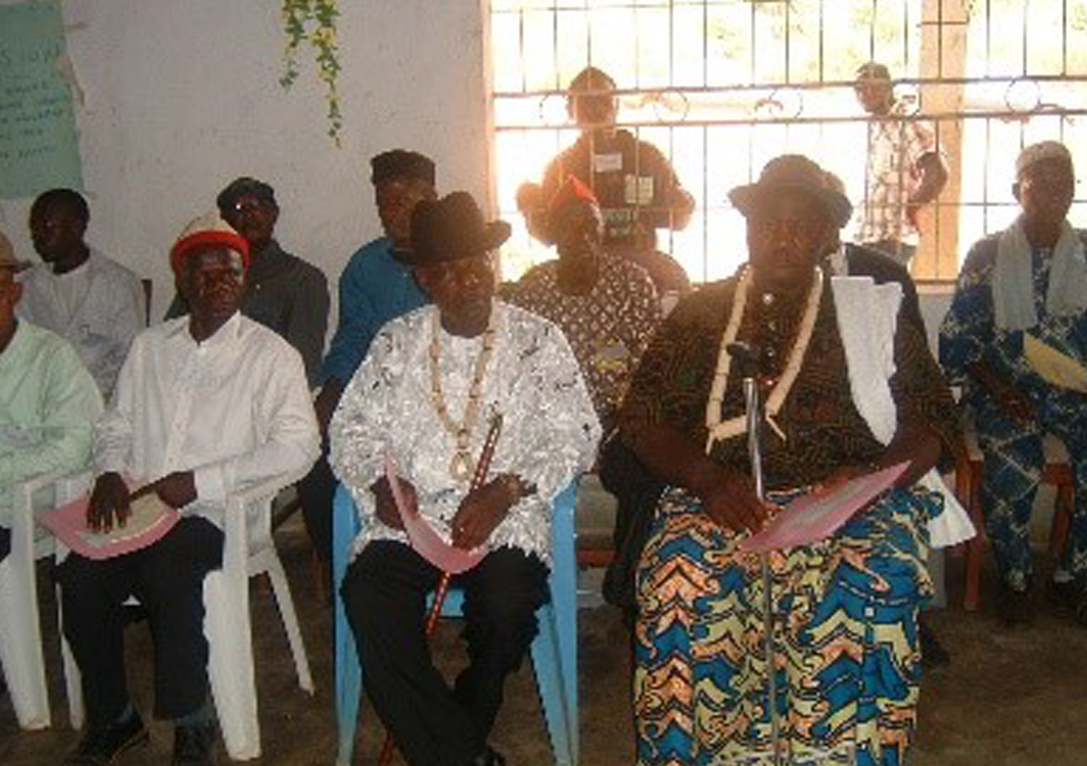LEADERSHIP
The Baiyeembi Dynasty Chiefs
The Chief Designate
Mfor Designate Jackson Erroh Ako Baiyee


HRH Mfor Simon Orock Mbonka Baiyee
He reigned in the Twenty-First Century














HRH Mfor Baiyee Takem Baiyee-Mbi III
He reigned in the Twenty-First Century
HRH Mfor Tabi Awung Baiyee
He reigned in the Twentieth Century

Acting Mfor Egbemba Baiyee
He reigned in the Twentieth Century
His Royal Highness Paramount Mfor Lefang Baiyeembi
The Great Traditional Ruler
He reigned in the Nineteenth and Twentieth Century
In order to understand the Baiyeembi Royal Family Dynasty, one must begin
with the life and royal work of His Royal Highness (HRH) Paramount Mfor Lefang Baiyeembi. The Great Lefang Baiyeembi
reigned as the last Paramount Chief of the entire Ndifaw Clan whose territory stretched from Nfi to Njung rivers,
covering the villages of the Ndifaw Clan, including Tali, Ebeagwa and Edjuingang. The Great Traditional Ruler rode his horse in
his days of glory. This influential and wealthy leader even constructed the first storey building in the Tali area in his palace in
Mbienjong Quarter.
HRH Paramount Mfor Lefang Baiyeembi succeeded his father, HRH Paramount Mfor Bale Baiyeembi, who in turn was successor of his father
HRH Paramount Mfor Defang Baiyeembi. In many ways, Paramount Mfor Lefang Baiyeembi was like his grandfather. Renowned Anthropolgist,
Malcolm Ruel, offers the following description of the powerful ruler’s wealth and influential grandfather on page 305 of his book entitled
“Leopards and Leaders: Constitutional Politics Among a Cross River People.”
“In the latter half of the nineteen century Tali was one of the largest Upper Banynag villages, its leader, Defang Baimbi [Baiyeembi],
one of the most powerful of all village leaders. Both in Tali and its neighbouring villages, the power and wealth of Defang are today remembered
in extravagant terms. Defang’s political influence was almost certainly related to his control of the main market for Upper Banyang, …The influence
of Defang stretched, then, beyond his own village group and it is reported that intractable disputes from other villages might be taken to him on Tali market day
for his judgment or help.”
Paramount Lefang Mfor Baiyeembi carried a penetrating aura and also commanded respect and inspired love of his people. He had a sterling record of achievements as a
builder and businessman. He commanded respect from not only his beloved people, but also his peers. He was physically a big and tall man. Mfor Baiyeembi had several wives
and several children. He may have had several wives and children to reflect his social, cultural and economic standing in society.
HRH Paramount Lefang Mfor Baiyeembi was industrious and had the mindset of a builder. He was an agent of development and his stature grew through the years of his leadership
of the Ndifaw Clan. He was a man of the people. He sought unity of his people and helped to forge a beloved Ndifaw community. The notable period of unity of the Ndifaw Clan may be
traced back to the reign of Paramount Mfor Baiyeembi. He formed cordial relationships with the other Ndifaw Chiefs of Ebeagwa and Edjuingang as well as he was effective with his Chief’s
Traditional Council. He empowered the ones he worked with to function in ways that promoted peace and development of the Ndifaw Clan. The success of HRH Paramount Mfor Baiyeembi and his Ndifaw Clan and neighboring eastern clans in defeating incursions from a neighboring clan on the west of Tali increased his stature
and influence among his people and the region.
HRH Lefang Baiyeembi was a man of integrity and courage. His moral compass compelled him to vociferously oppose exploitative activities of colonialists in his region of Cameroon. The opposition resulted in his
‘detainment’ on one of the Bota Islands by Man ‘O’ War Bay off the coast of Limbe, formerly called Victoria, in the South West Region of Cameroon. He summoned the courage to swim from his ‘detention’ across
the Atlantic Ocean to the Limbe shore. On shore, he took a horse from one of the colonialist stations in Limbe and rode back to his palace in Tali. Upon his return to Tali, Paramount Mfor Baiyeembi magnanimously
allowed his younger brother, Interim Mfor Egbemba, to continue his reign on a temporary basis as the Chief while he served as his adviser and mentor.
The colonialist left HRH Mfor Baiyeembi alone after he returned to Tali from Man ‘O’ War Bay.
At his palace in Tali, he hosted Eugene Zintgraff, the German explorer who in 1886 was sent by the German Foreign Ministry to embark on explorations in Kamerun (Cameroon). Zintgraff took Chief Miyimbi's [Baiyeembi’s] daughter to the grasslands where she died on the highlands close to Bambui.
It was common practice during the era of the reign of Paramount Mfor Defang Baiyeembi for a father with a large family to offer a daughter as a significant special gift of friendship.
Once again, the prominence of Paramount Mfor Lefang Baiyeembi was very much like that of his grandfather, HRH Mfor Defang Baiyeembi, whose reign was marked by the prominence of relations with Bangwa to the east of Tali. During his tenure, the Tali market was an important market for such necessities and luxuries such as guns, cloth, currency beads, salt, and miscellaneous European goods.
The German trader Gustav Conrau looked for ivory and plantation labour in Tali. The perspective below highlights the nature of the relationship:
“Legend recalls that the son and heir of Chief of Fontem was captured and enslaved by the Banyang; he was only released through the intervention of the wife of the Chief of Tali to whom a payment of seven slaves was made. This story is used to justify Fontem’s annual tribute to the Tali Chief, on the other hand it could hardly symbolize Fontem’s political subordination to Tali.
It may have been a tributary recognition of the importance of the Tali market in Bangwa economy.”
In sum, HRH Mfor Lefang Baiyeembi was committed to transform the lives of residents in Tali through unity, commerce and peaceful existence. He had the power, ability and capacity to influence his people. He was a transformational leader.
References:
1. Leopards and Leaders: Constitutional Politics among a Cross River People. By Malcolm Ruel.
Routlege, 2014.
2. Cameroon's Tycoon: Max Esser's Expedition and its Consequences. Edited by E.M. Chilver
and Ute Röchenthaler. Berghahn Books, 2001, pg 135-136
3. Zintgraff’s Explorations in Bamenda, Adamawa and the Benue Lands 1889-1892. By EM
Chilver. Langaa RPCIG, 2010,pg 21.
4. The Bangwa of West Cameroon: A Brief Account of Their History and Culture. By Robert
Brain, University College London, 1967, pg 3-4
HRH Mfor Bale Baiyeembi
He reigned in the Nineteenth Century
HRH Mfor Defang Baiyeembi
He reigned in the Nineteenth Century
Early line of Mfor:
His Highness the Royal Ancestor Mbi-Aya